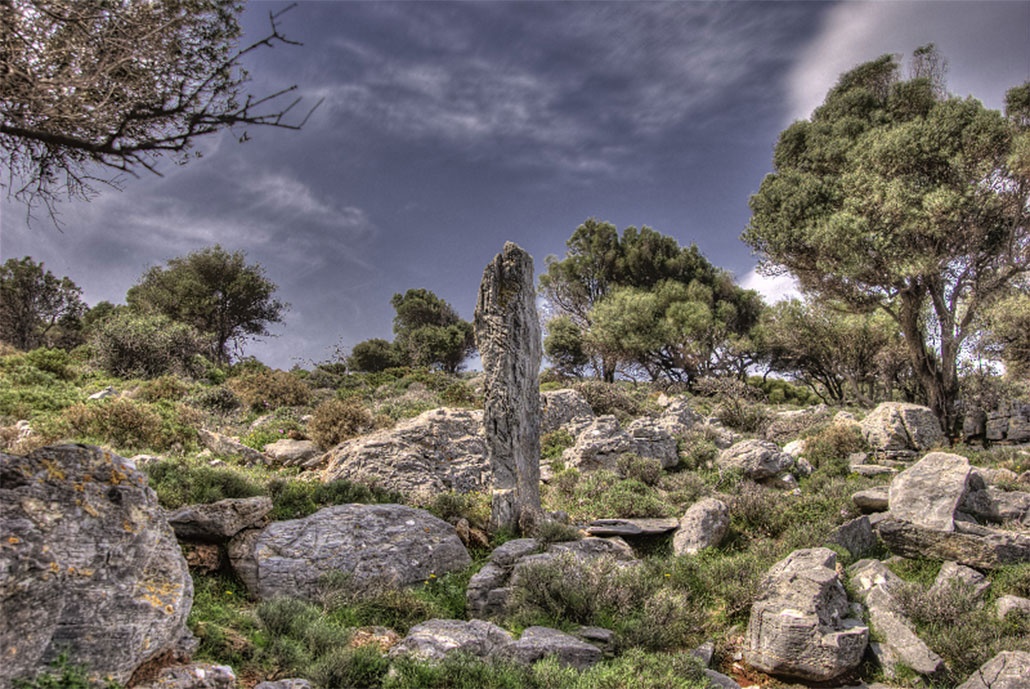
Διαβάστε το ελληνικό άρθρο εδώ.
Propezoulopi is situated very close to Faros. It is a hill northwest of the settlement, with rocky grounds, overgrown with brambly bushes and wild-olives. This specific area is of great interest due to the placement of erect stones made out of limestone, with specific orientation. It is certain that the stones were not placed there by chance, but, at least for now, the exact time of their creation, as well as their actual purpose, remain unidentified. Stone worship, however, has been known to occur through ancient times. These crude monoliths (menhirs), that resemble the obelisks of later times, were the object of worship during ancient history, much like the meteoric stones mentioned in several sources.
The tallest stone has a height of 2.5m. All of them have a pointy top and face from the southeast to northwest. The distance between each stone is 3m. or 9 ancient Greek feet. In the surroundings area there are a lot of similar stones, some of them still standing, other fallen to the ground, and their dimensions vary from 70cm to 2m.
To the Northwest of the area there are a lot of tombs. Many of them are covered by bushes. Three of them, that are visible and accessible, have been excavated and robbed. One of the tombs is 3m long and 60 cm deep. It has a box like shape and part of it is carved on to the natural rock (1.9 x 0.4m).
The perambulation of the hill is brief and enjoyable, with the accompanying aromas of sage and heather. Visitors to the area always seem to count the obelisks and try to figure out what is the connection between them.
Maybe it is the earliest place of worship of the island (“Ikariaka symmeikta”, by Th. Katsaros) and this is a theory that is reinforced by the fact that Propezoulopi is situated in an area that has direct visual contact with the Iero bay. Till this day, nobody has proven whether they were connected to the bacchanalian worship, or they just served as a sign to the adjacent cemetery.
It is a mystery walk, through Ikaria’s past.
Jiannis Kefalos
Ikariamag.gr
p.s. These meteoric stones (greek: βαίτυλοι) were conic shaped stones that were believed to be the houses of Gods. The Greek word «βαίτυλοι» appears to be a loan from the Phoenician or Hebrew word (Veth-El) which literally means “the house of God El”. Pausanias expressed his amazement as to how certain cultures worshiped stones, until he realized that they were considered the houses of God. Their worship, in Greece, probably went through Crete, that first came into contact with the Phoenician civilization. The priests would coat them with oil, wine, or blood and adorn them with wreaths, decorative tapes, and clumps of unprocessed wool.








